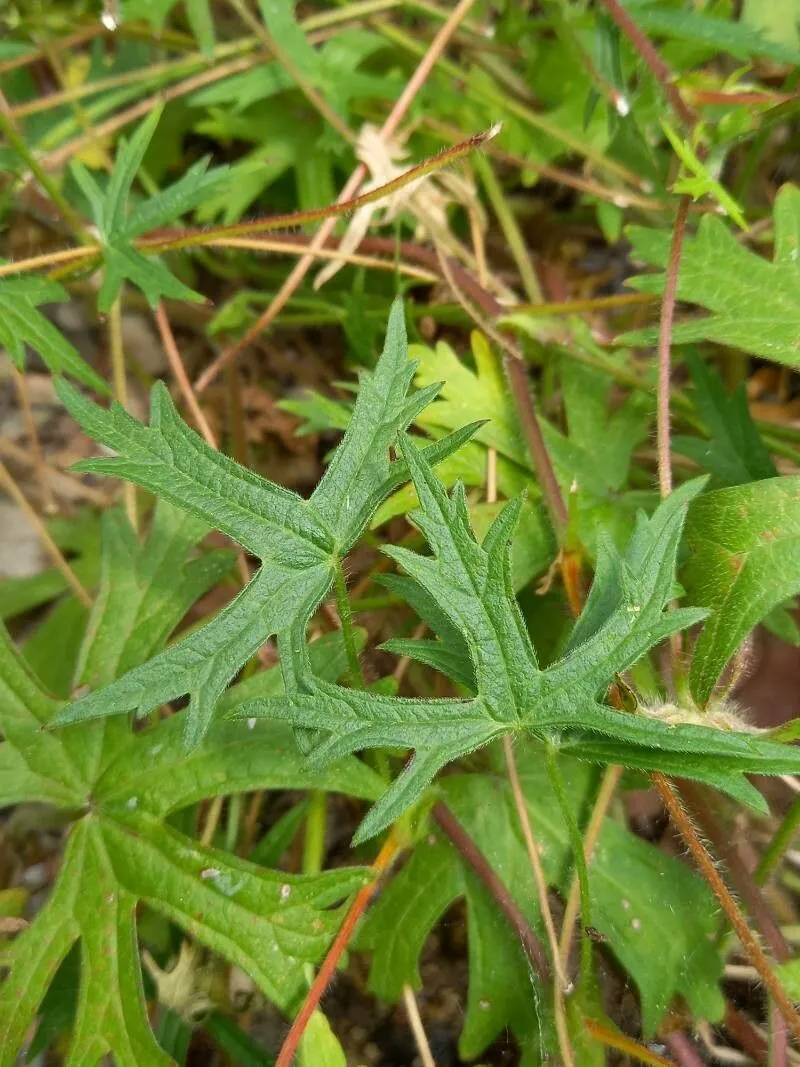
Author: (Torr. & A.Gray) A.Gray
Bibliography: Mem. Amer. Acad. Arts, n.s., 4(1): 16 (1849)
Year: 1849
Status: accepted
Rank: species
Genus: Callirhoe
Vegetable: Unknown
Observations: WC. & C. U.S.A. to NE. Mexico
The Low poppymallow, known by its scientific name Callirhoe involucrata, is a captivating member of the Malvaceae family. This charming perennial is native to regions extending from the west-central and central areas of the United States to northeastern Mexico, thriving in a variety of habitats across these geographical zones. The plant is celebrated for its vibrant and striking flower displays, which contribute to its popularity in native and cultivated landscapes.
Callirhoe involucrata was first described in the mid-19th century, with its first formal publication appearing in the “Memoirs of the American Academy of Arts and Sciences” in 1849, authored by eminent botanists John Torrey and Asa Gray, and later adapted by Asa Gray. This historical botanical documentation provides the foundational scientific framework for the understanding and classification of the species.
The Low poppymallow is particularly known for its sprawling growth habit, creating a dense mat of foliage that can serve as an effective ground cover. Its leaves are deeply lobed and have a rich green hue, providing an appealing backdrop for the plant’s most notable feature—its flowers. These blossoms, typically a deep magenta or wine-red color, are cup-shaped and resemble small poppies, making them a visually striking addition to any garden. The flowers possess a delicate charm that attracts not only humans but also a range of pollinators, including bees and butterflies, contributing to the ecological health of their environment.
Culturally, Callirhoe involucrata is favored in garden settings for its low maintenance requirements and its ability to adapt to various soil types, provided they are well-drained. The plant is drought-tolerant once established, making it an excellent choice for xeriscaping and for regions prone to dry conditions. For gardeners interested in native plantings, the Low poppymallow offers the dual benefits of aesthetic appeal and environmental suitability, promoting biodiversity and sustainability.
In conclusion, the Low poppymallow (Callirhoe involucrata) is a botanical gem that combines visual beauty with ecological relevance. Its historical documentation by Torrey and Gray underscores its longstanding importance, while its adaptability and striking appearance ensure its continued popularity among plant enthusiasts and gardeners alike.
Eng: low poppymallow, purple poppy mallow, purple poppy-mallow, purple poppymallow, winecup
Swe: källblomster
Deu: purpurnemohnmalve
En: Low poppymallow, Purple poppy mallow, Purple poppy-mallow, Purple poppymallow, Winecup
De: PurpurneMohnmalve
Sv: Källblomster
Taken Jun 22, 2022 by Kai Best (cc-by-sa)
Taken May 27, 2022 by Axelle R. (cc-by-sa)
Taken Jul 26, 2022 by Kai Best (cc-by-sa)
Taken Jul 22, 2022 by William Coville (cc-by-sa)
Taken Jun 22, 2022 by Kai Best (cc-by-sa)
Taken Jun 22, 2022 by Kai Best (cc-by-sa)
Taken Jul 26, 2022 by Kai Best (cc-by-sa)
Taken Apr 21, 2022 by Helene Payton (cc-by-sa)
Taken Jul 20, 2009 by GorazdG (cc-by-sa)
Family: Myrtaceae Author: (F.Muell.) K.D.Hill & L.A.S.Johnson Bibliography: Telopea 6: 402 (1995) Year: 1995 Status:…
Family: Rubiaceae Author: Pierre ex A.Froehner Bibliography: Notizbl. Bot. Gart. Berlin-Dahlem 1: 237 (1897) Year:…
Family: Sapindaceae Author: Koidz. Bibliography: J. Coll. Sci. Imp. Univ. Tokyo 32(1): 38 (1911) Year:…
Family: Asteraceae Author: A.Gray Bibliography: Pacif. Railr. Rep.: 107 (1857) Year: 1857 Status: accepted Rank:…
Family: Fabaceae Author: Medik. Bibliography: Vorles. Churpfälz. Phys.-Ökon. Ges. 2: 398 (1787) Year: 1787 Status:…
Family: Aspleniaceae Author: (Cav.) Alston Bibliography: Bull. Misc. Inform. Kew 1932: 309 (1932) Year: 1932…